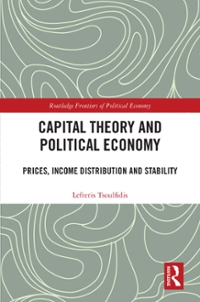Answered step by step
Verified Expert Solution
Question
1 Approved Answer
K = .:1I Yt = A K' H! N I-u- Suppose that both physical and human capital are accumulated with constant savings rates SK and

Yt = A K' H! N I-u- Suppose that both physical and human capital are accumulated with constant savings rates SK and SH respectively and depreciate at the common rate 6, that is -Kt = - Kt and There is no growth in productivity A or raw labor N. (a) [3 marks] Suppose A = l, (1 = [3 = 1/4, SK = SH = 0.12 and = 0.06. Let y = Y/ N, k = K/ N and h = H/ N denote output per worker, physical capital per worker, and human capital per worker respectively. Let 4) = h/k denote the intensity of human capital relative to physical capital. Calculate y, k, h and (l) in steady state. (b) [3 marks] How does steady state output per worker in this economy compare to the steady state output per worker of the analogous Solow model without human capital (i.e., with Yt = AK}NI and A = l, (1 = 1/2, s = 0.12 and = 0.06. Explain the differences. (c) [3 marks] Now consider the case = 1/4 and = 3/4 with all the other parameters as in part (a) above. Explain why this version of the Solow growth model can exhibit endogenous growth. Calculate the long run growth rate of output per worker. (d) [1 mark] Assume the same production function as in part (c) but now, suppose the savings rate = 0.18. Would this increase or decrease the long run growth in human capital increases to SH rate of output per worker? Explain.
Step by Step Solution
There are 3 Steps involved in it
Step: 1

Get Instant Access to Expert-Tailored Solutions
See step-by-step solutions with expert insights and AI powered tools for academic success
Step: 2

Step: 3

Ace Your Homework with AI
Get the answers you need in no time with our AI-driven, step-by-step assistance
Get Started


